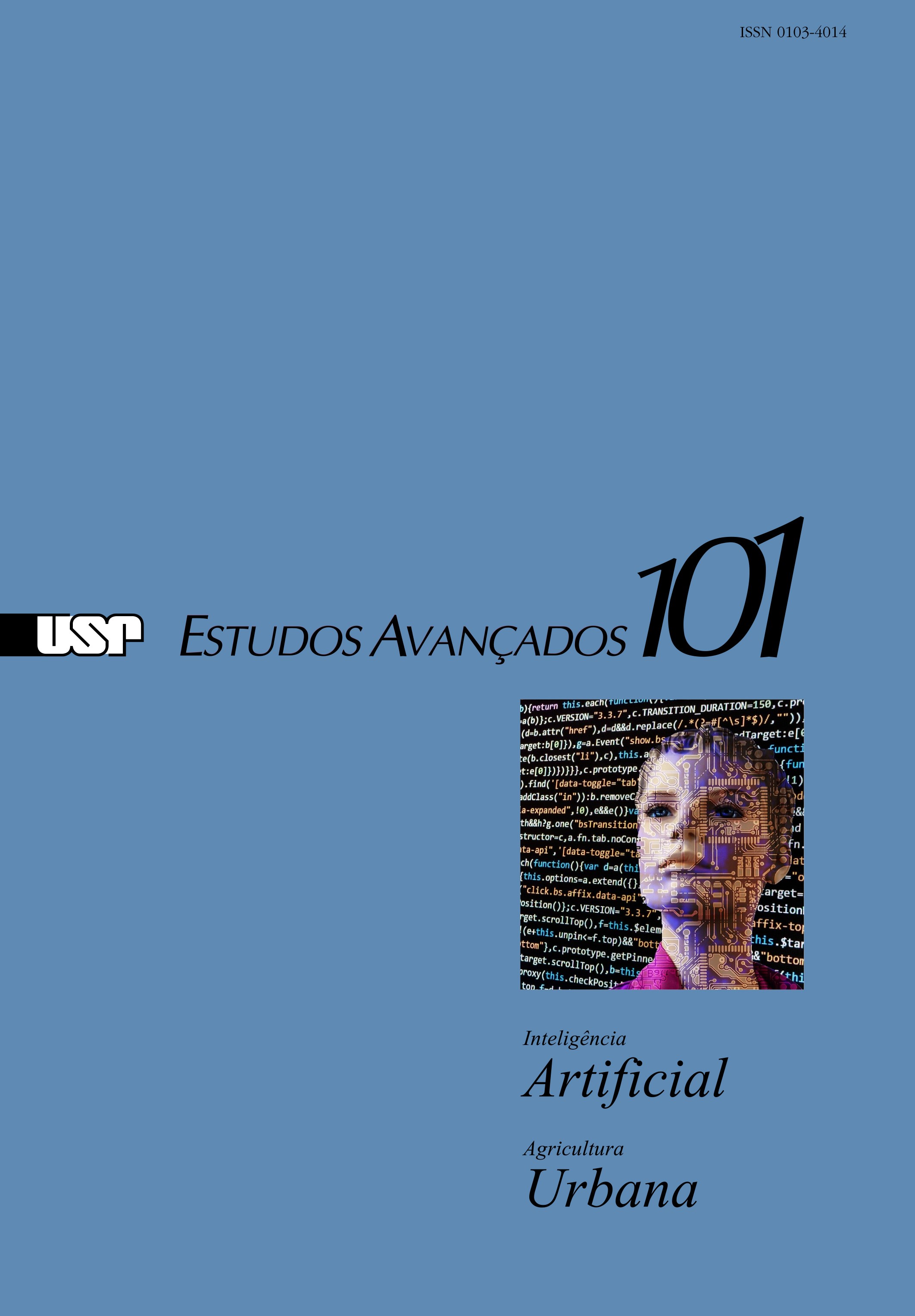Influências das Tecnologias da Inteligência Artificial no ensino
DOI:
https://doi.org/10.1590/s0103-4014.2021.35101.006Palavras-chave:
Inteligência Artificial, Inteligência Artificial na educação, Ambientes virtuais de aprendizagemResumo
Após 64 anos de seu surgimento, a Inteligência Artificial (IA) enfrenta o complexo e o incerto dos nossos dias. Nesse período de sua existência, podem-se destacar dois “invernos” (1980 e 1993) em que as aplicações eram interessantes, mas a IA não conseguiu dar respostas adequadas: na compreensão da linguagem e no diagnóstico médico. Por outro lado, a IA apresentou duas décadas de progressos (2000 e 2010), em que as aplicações se mantiveram, mas as respostas da IA apresentaram avanços na tradução automática (Google), no reconhecimento de imagens (a primeira a utilizar a tecnologia foi a Apple, no iPhone 10), diagnóstico do câncer (IBM Watson) e carros autônomos (dentre outras, a Tesla). Este texto é fruto da revisão sistemática da literatura e da experiência da autora na área.
Downloads
Referências
BESOLD, T. R. et al. Reasoning in non-probabilistic uncertainty: Logic programming
and neural-symbolic computing as examples. Minds and Machines, v.27, n.1, p.37-77,
COSTA, A. R.; COELHO, H. Interactional Moral Systems: A model of social mechanisms for the moral regulation of exchange processes in agent societies. IEEE Transactions on Computational Social Systems, v.6, n.4, p.778-96, 2019.
EPSTEIN, J. M. Agent-Zero and Generative Social Sciences, Princeton Press, 2016. Disponível em: <https://sites.nationalacademies.org/cs/groups/dbassesite/documents/
webpage/dbasse_175078.pdf>. Acesso em: 25 out. 2020.
GALAFASSI, C. et al. EvoLogic: Intelligent Tutoring System to Teach Logic. Lecture
Notes in Computer Science, v.12319, p.110-21, 2020.
GIRAFFA, L;. MÓRA, M.; VICCARI, R. Modelling an interactive ITS using a MAS
approach: from design to pedagogical evaluation. In: IEEE THIRD INTERNATIONAL CONFERENCE ON COMPUTATIONAL INTELLIGENCE AND MULTIMEDIA APPLICATIONS 1999, v.3. IEEE, New Delhi, 1999.
GLUZ, J. C. et al. Heraclito: a Dialectical Tutor for Logic. In: PORTUGUESE CONFERENCE ON ARTIFICIAL INTELLIGENCE, EPIA, 2013, Açores/Portugal. 16th
Portuguese Conference on Artificial Intelligence, EPIA 2013, Proceedings. New York:
Springer, v.8154, p.1-2, 2013.
KOTSERUBA, J.; TSOTSOS, J. K. 40 years of cognitive architectures: core cognitive
abilities and practical applications. Artificial Intelligence Review, v.53, p.17-94, 2018.
MARCUS, G. The Next Decade in AI: Four Steps Towards Robust Artificial Intelligence Robust AI. Cornell University, 2020. Disponível em: <https://arxiv.org/
abs/2002.06177>. Acesso em: 20 out. 2020.
OKOSHI, Y. China Overtakes US in AI Patent Rankings. NIKKEI, 2019. Disponível
em: <https://asia.nikkei.com/Business/Business-trends/China-overtakes-US-inAI-
-patent-rankings>. Acesso em: 20 jun. 2020.
PEARL, J.; MACKENZIE, D. The book of why: the new science of cause and effect. New
York: Basic Books, 2018.
PEREIRA, F.; MITCHELL, T.; BOTVINICK, M. Machine learning classifiers and
fMRI: a tutorial overview. Neuroimage, v.45, S199–S209. doi: 10.1016/j.neuroimage.2008.11.007,2009.
PICARD, R. Affective Computing. 2.ed. Cambridge: Mit Press Hardcove, 1998.
RAEDT, L. D. et al. Statistical relational artificial intelligence: Logic, probability, and
computation. Synthesis Lectures on Artificial Intelligence and Machine Learning, v.10,
n.2, p.1-189, 2016.
RAO, G. BDI Agents: From theory to Practice. In: First International Conference on
Multiagents Systems I. Anais… California: AAAI, 1995. p.312-319.
RUSSELL S. Q & A: The future of artificial intelligence. Carnegie Council for Ethics in International Affairs, 2020. Disponível em: <https://people.eecs.berkeley.
edu/~russell/research/future/>. Acesso em: 18 set. 2020.
SAGAR, P. R. Top 5 Latest Advancements in Artificial Intelligence, oct. 2020. Yuorhistory, Disponível em: <https://yourstory.com/mystory/top-five-latest-advancements-
-artificial-intelligence>. Acesso em: 31 nov. 2020.
TANENHAUS, M. K. et al. Integration of visual and linguistic information in spoken
language comprehension. Science, v.268, n.5217, p.1632-1634, 1995.
VEALE, T. CARDOSO, A. (Ed.) Computational Synthesis and Creative Systems,
Springer, ISSN 2509-6575, ISBN 978-3-319-43608-1, p.1-397. https://doi.
org/10,1007/978-3-319-43610-4, 2019.
VICCARI, R. M. et al. A Multi-Agent Intelligent Environment for Medical Knowledge. Artificial Intelligence in Medicine. Elsevier Science B. V., v.27, p.335-66, 2003.
WIPO - World Intellectual Property Organization. WIPO Technology Trends 2019
-Artificial Intelligence. Disponível em: <https://www.wipo.int/publications/en/details.jsp?id=4386>, 2019. Acesso em: 24 jun. 2020.
Publicado
Edição
Seção
Licença
Copyright (c) 2021 Rosa Maria Vicari

Este trabalho está licenciado sob uma licença Creative Commons Attribution-NonCommercial 4.0 International License.
Estudos Avançados não celebra contrato de cessão de direitos autorais com seus colaboradores, razão pela qual não detém os direitos autorais dos artigos publicados. Os interessados em reproduzir artigos publicados na revista devem necessariamente obter o consentimento do autor e atribuir devidamente os créditos ao periódico.


